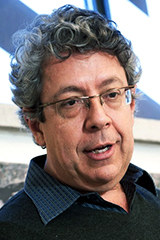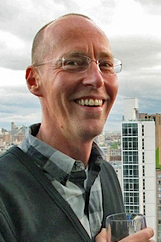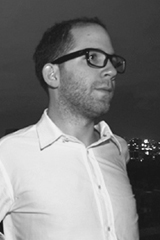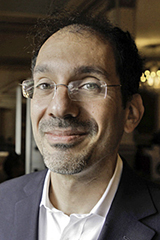Spring 2013 architecture lectures draw design luminaries to campus
A diverse group of leaders in architectural design and education shared their knowledge and experiences with Texas A&M students as part of the Spring 2013 Department of Architecture Lecture Series.
 Jan. 18
—
Renato Anelli
Jan. 18
—
Renato Anelli
Architect, author, educator
Renato Anelli presented “Lina Bo Bardi in the Frame of Brazilian Architecture” Jan. 18.
Bo Bardi (1914-1992), a Modernist Brazilian architect who designed the [São Paulo Museum of Art] (http://www.cidadedesaopaulo.com/sp/en/what-to-see/201-masp) and [The Glass House] (http://www.institutobardi.com.br/eng/instituto/instituto/historia.html) was hailed in a 1992 magazine [article] (http://www.institutobardi.com.br/eng/lina/depoimentos/index.html) as “the greatest and most complete Brazilian architect of her time.”
Anelli, a professor at the Instituto de Arquitetura e Urbanismo, Universidade de São Paulo at São Carlos, researches modern and contemporary architecture in Brazil with special attention to its relationship with European and U. S architecture.
In addition to his theoretical and historical research, he works with architecture, urban design and public administration.
He developed a sustainable urban mobility plan for the city of São Carlos during a stint as its secretary of public works, transportation and services from 2001 to 2004 and now chairs its city council for urban development.

 Feb. 13
—
Niccolo Casas
Feb. 13
—
Niccolo Casas
Architect, artist, educator
Casas, a Ph.D. student at London’s Barlett School of Architecture, lectured on Feb. 13. His research proposes to identify characteristics of a new sensibility of an aesthetic of ugliness emerging in contemporary architecture, analyzing its origins and its implications in science and art.
“While ugliness seems to be a domain relatively unexplored in architecture, other disciplines such as art, the movie industry, poetry and advertisement have always been open to the fascination of imperfection, horridness and abhorrence,” he said.
He considers ugliness not as an aesthetic quality or condition, but as a result of the processes of decline, aging and death.
Casas is a professor of digital modeling techniques at Accademia di Belle Arti di Bologna and was previously a professor at the Università di Bologna Facoltà di Ingegneria Edile/ Architettura .

 Feb. 25
—
Ronnie Self
Feb. 25
—
Ronnie Self
Architect, educator
Ronnie Self, associate professor at the Gerald D. Hines College of Architecture at the University of Houston, lectured on Feb. 25.
Self spent 12 years in Paris as a designer and collaborator at the Renzo Piano Building Workshop. Among his many projects, he was architect in charge of the Atelier Brancusi [reconstruction] (http://madaboutparis.com/culture/atelier-brancusi-leda-and-the-birds.html) at the Centre National d’Art et de Culture Georges Pompidou.
The American correspondent for the French architectural magazine Archicréé, Self’s articles about art museums has also been published in Architectura Viva, Cite, and Texas Architect.
He also designed the [Saint Emanuel House ] (http://www.ronnieself.com/?page_id=8) and the Rensink Artist Studio in Houston.

 March 4
—
Luis Callejas
March 4
—
Luis Callejas
Architect, educator
Luis Callejas, founder of [LCLA OFFICE] (http://www.luiscallejas.com) , an architecture studio and international research platform based in Medellin, Colombia, presented “Derivative Territories” on March 4.
Selected in 2010 as one of the world’s top young architects by Moscow’s Iakov Chernikhov foundation, Callejas designed two of Latin America’s major new athletic facilities: an aquatic center in Medellin for the XI South American games, and a complete renovation of Bogotá’s main soccer stadium.
He is part of an itinerant group of architects, landscape designers and scholars exploring the energy infrastructures of Iceland, northern Norway and Sweden.
Callejas is a visiting faculty member at Harvard’s Graduate School of Design, where he leads a research seminar on energy infrastructure, and has been a visiting faculty member at the University of Toronto, the Scola da Cidade in Sao Paulo, Brazil, The Oslo School of Architecture, Landscape and Design, and the Universidad Pontificia Bolivariana in Medellin.

 March 20
—
Jason Griffiths
March 20
—
Jason Griffiths
Architect, educator
Griffiths presented “Manifest Destiny: A Guide to the Essential Indifference of American Suburban Housing” March 20.
“Manifest Destiny,” selected by the Los Angeles Times as one of the 10 best architecture [books] (http://www.amazon.com/Manifest-Destiny-Essential-Indifference-American/dp/1907896058) in 2011, began as a sabbatical research/lecture [tour] (http://places.designobserver.com/feature/manifest-destiny-american-suburban-housing/30438/) of suburbs in North America.
“Suburban homeowners maintain a steadfast dedication to the suburban ethic,” said Griffiths, a partner at [Gino Griffths Architects] (http://ginogriffiths.com/) . “The relentlessness of suburbia may at times be disturbing, but it is equally compelling, and it is hard not to be impressed by the manner in which this realm propagates itself through the rules that bind its devotees.”
Intricately tied to the history of the picturesque, he said, these rules have helped define a level of exclusivity that has been a key factor in conditioning suburbia from the very beginning, when it was the domain of an English mercantile elite.
As an assistant professor of architecture at the Herberger Institute for Design and the Arts at Arizona State University, Griffith explores the design-build studio as a vehicle for research interests in digital fabrication and contemporary iconography.

 March 25
—
David Rifkind
March 25
—
David Rifkind
Architect, educator
Architect and educator David Rifkind presented “Modern Ethiopia: Architecture, Urbanism and the Building of a Nation” March 25.
His [research] (http://www.grahamfoundation.org/grantees/3961-modern-ethiopia-architecture-urbanism-and-the-building-of-a-nation) examines architectural responses to processes of modernization, with special emphasis on the relationships between modern architecture and political forces during Italy's twenty-year period of fascist rule; his project focusing on Italian colonial urban planning and architecture in East Africa is the first to integrate extensive field study in Ethiopia with archival research in Europe and the United States.
The project comprises the first component in a long-term study of modern architecture and urban planning throughout Africa.
Rifkind and his wife Holly Zickler, also an architect, are designing and building a LEED Platinum house in Miami, [blogging] (http://somigreenhouse.blogspot.com/) their thoughts about design, construction, neighborhoods, gardening, cooking, modern life, and sustainability.

 April 22
—
Eric Goldemburg
April 22
—
Eric Goldemburg
Architect, educator, author
Goldemburg, founding principal of Monad Studio in North Miami Beach, Florida, will lectured April 22. His design research practice focuses on spatial perception related to rhythmic affect, with explorations ranging from the scale of urban plans to buildings and from landscape to installations and product design.
His 2011 book, “Pulsation in Architecture,” reveals progressive, innovative concepts and fabrication techniques connected to the production of contemporary architecture design as well as cutting-edge technologies impacting how architecture is conceived and delivered.
The book, said architect Terence Riley in a review, makes a very strong case not only for whirling, swirling, curling movement in architecture, but for a movement in architecture as well.
Goldemberg tells us not only what he thinks, said Riley, but in many ways helps clarify the thinking of a generation of designers including Peter Eisenman, Preston Scott Cohen, Hernan Diaz Alonso, Ali Rahim and Karim Rashid.
Goldemberg holds a Masters of Science in Advanced Architectural Design from Columbia University and a professional degree from the University of Buenos Aires, Argentina. He has taught at Florida International University since 2006 as an Assistant Professor and is the digital design coordinator of the Architecture Department. He has taught at Columbia University, Pratt Institute, and New York Institute of Technology.
Previous post
Tags
Related Posts

Former students featured at 2014 Rowlett Lecture
Design masters from Americas lectured this fall at TAMU
Lecture series hosts six design masters
Preservation experts review 1930s–era buildings on campus

Speakers to discuss behavioral health facility design
Follow Us
Facebook Twitter Vimeo Youtube Flickr RSS
Recent Posts

Planning prof heads study of disaster housing aid

A message from the dean

Former student remembered as expert planner

Leading educator named new head of Architecture Dept.




_thumbnail_small.png)
